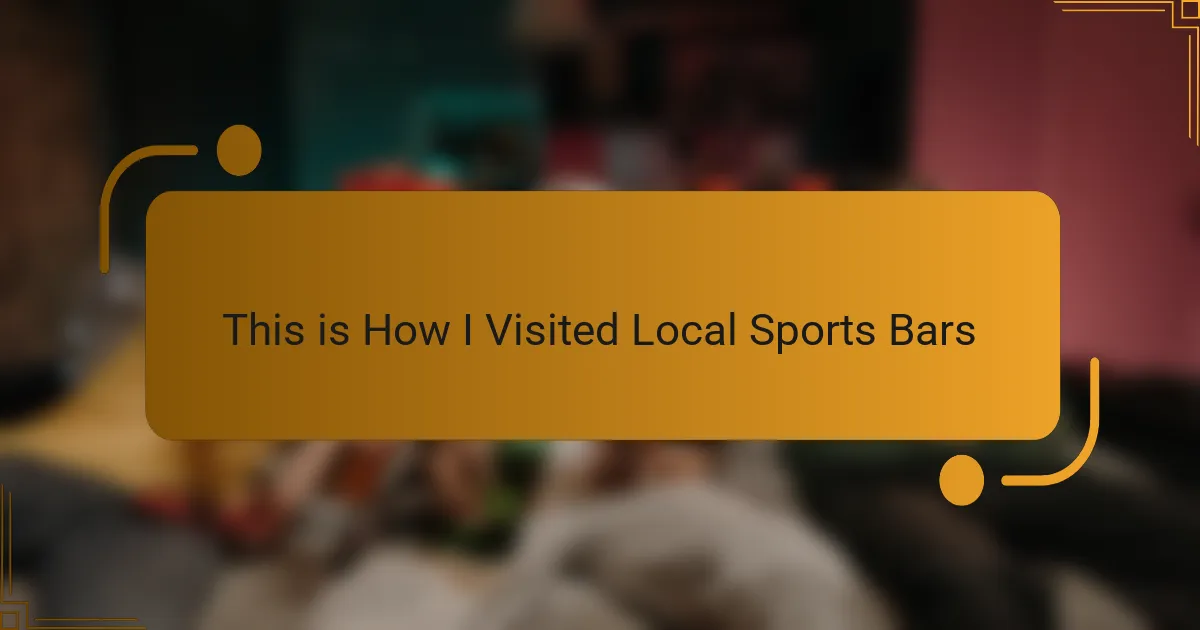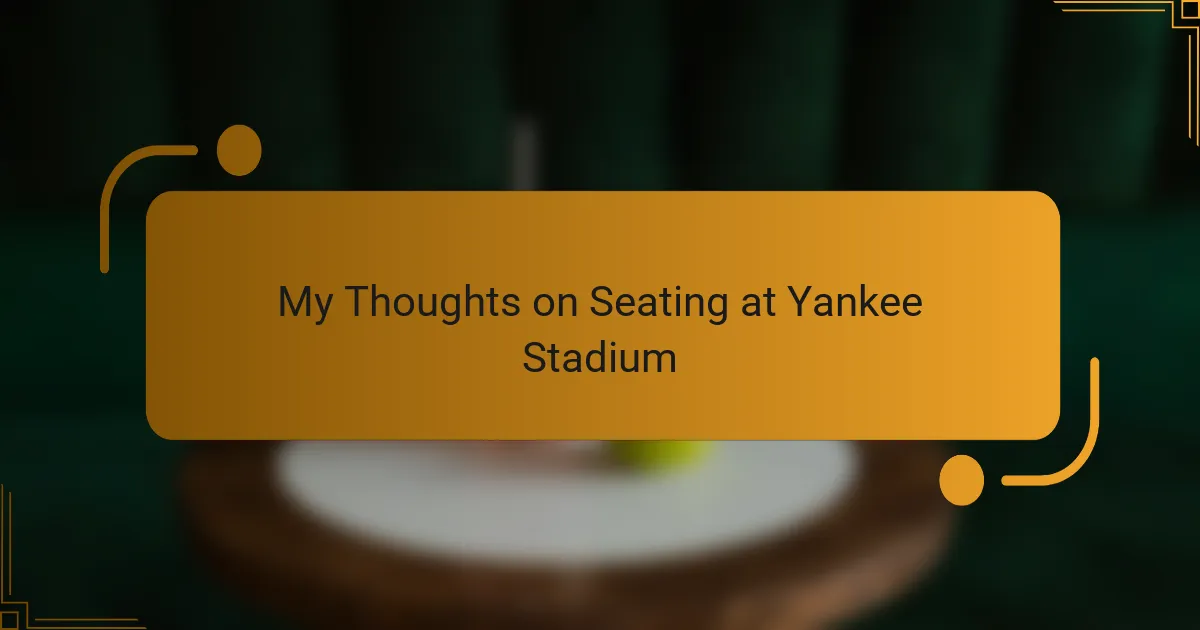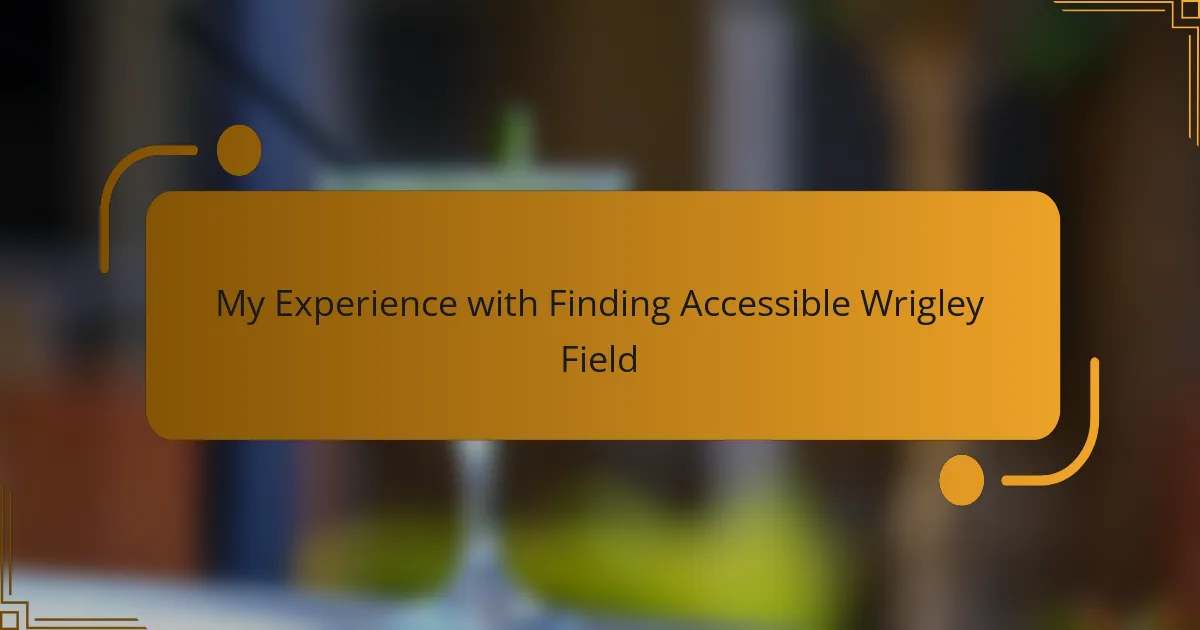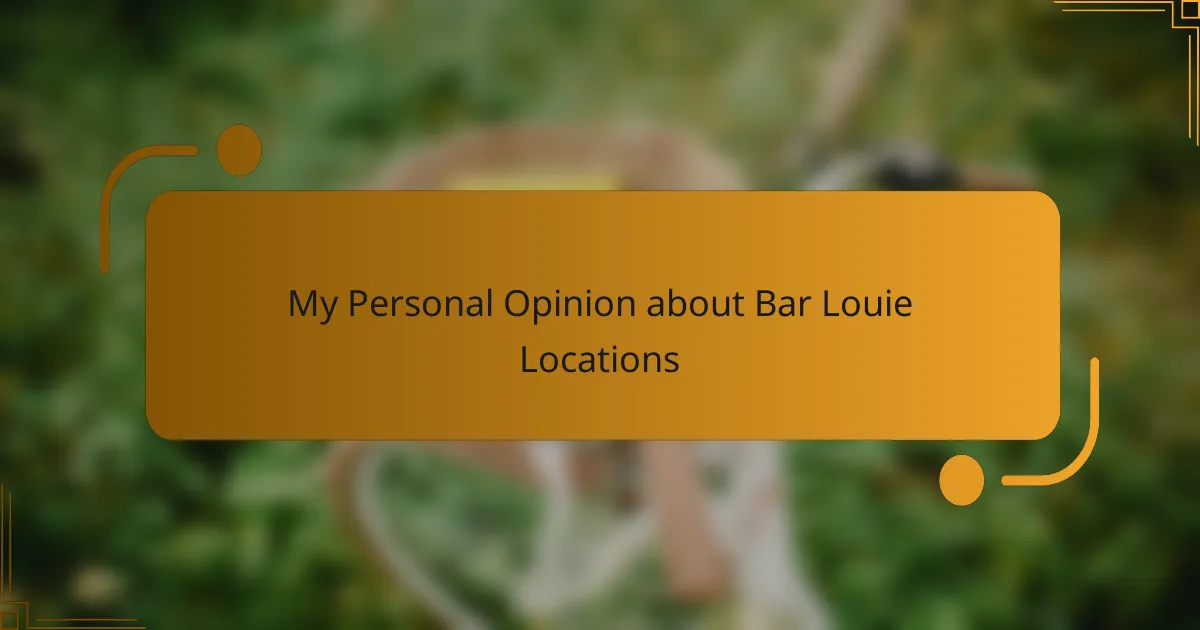Key takeaways
- Accessibility in sports venues goes beyond physical features, focusing on creating an inclusive environment for all fans, including sensory accommodations.
- Sports bars showing thoughtful design, like wide aisles and accessible seating, enhance the overall experience for everyone, fostering a welcoming atmosphere.
- Visiting the Rose Bowl Sports Bar highlighted effective accessibility features, including clear signage and assistive listening devices, which positively impacted the enjoyment of the event.
- Challenges in navigating venues prompt continuous improvements, with attentive staff ready to assist and address feedback, demonstrating a commitment to accessibility.
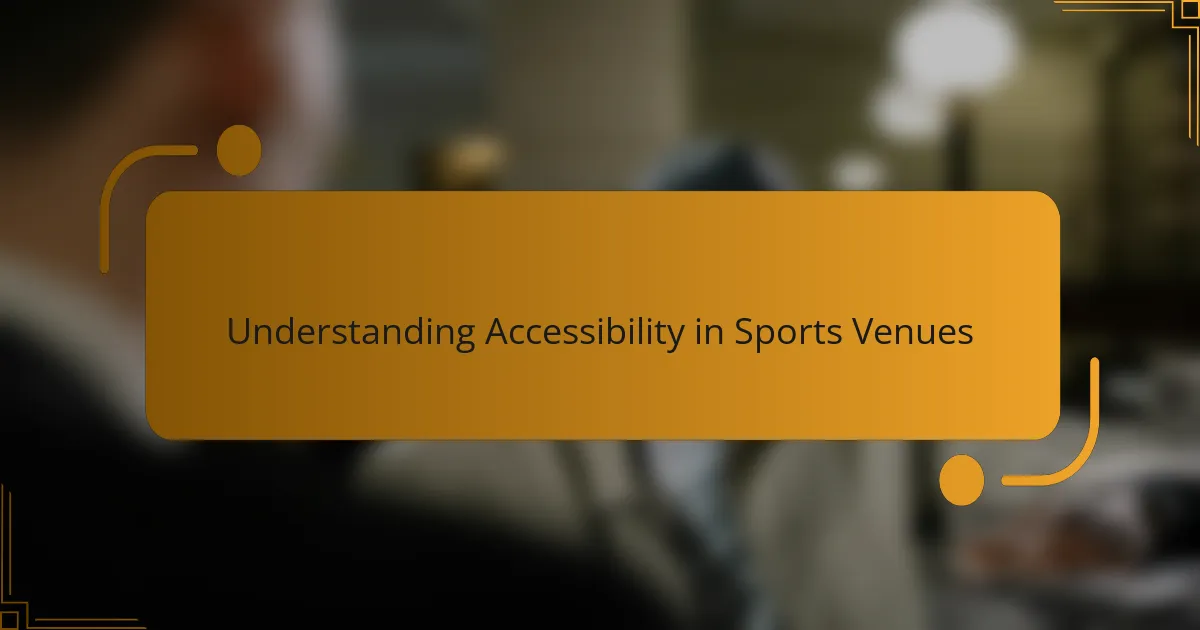
Understanding Accessibility in Sports Venues
Accessibility in sports venues is more than just ramps and elevators; it’s about creating an environment where everyone feels included and valued. From my visits, I’ve realized how crucial clear signage and well-placed seating are to help those with mobility challenges navigate the space confidently. Have you ever found yourself struggling to locate an accessible restroom or seating area? That confusion can take away from the enjoyment of the event entirely.
What truly stood out to me was the thoughtful design that anticipates the needs of diverse fans—not just physically, but also in terms of sensory experiences. I remember feeling a shift when I noticed quiet zones and assistive listening devices available, which made me appreciate how venues can cater to more than just the average fan. Isn’t it encouraging to see sports spaces evolving to accommodate everyone’s experience?
Still, accessibility often feels like an afterthought at many venues, leaving folks frustrated or excluded. It made me wonder how much more effort could transform these spaces into places where everyone, regardless of ability, can share the excitement and camaraderie of the game. The Rose Bowl’s approach gave me hope that accessibility can become a genuine priority, rather than just a checkbox on a list.
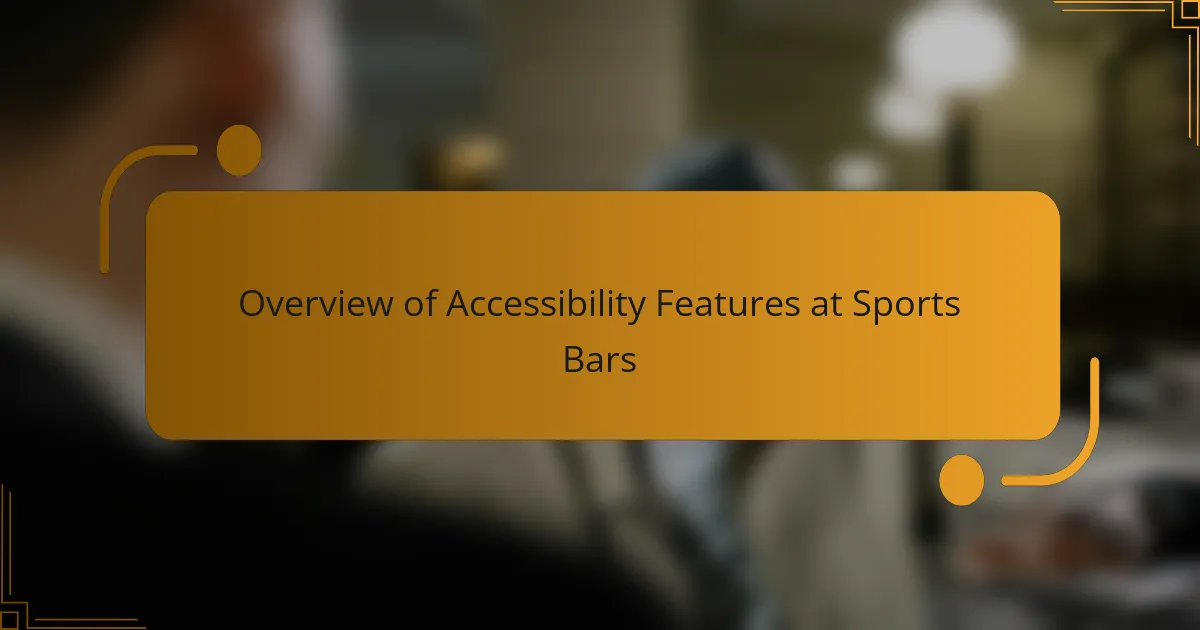
Overview of Accessibility Features at Sports Bars
When I think about accessibility features in sports bars, I notice how crucial the layout is. Wide aisles and accessible tables aren’t just practical—they signal that everyone is welcome to grab a drink and catch the game without feeling sidelined. Have you ever squeezed through a crowded bar, hoping to find a spot where you don’t feel cramped or excluded? That simple sense of space can make all the difference.
What’s impressed me most during my visits is how some sports bars go beyond the basics. I’ve seen adjustable-height bar stools and menus in large print, which seemed small until I realized how much they help folks with different needs. It’s those thoughtful touches that show real care, making the experience more enjoyable for everyone.
Yet, I can’t ignore how inconsistent these features often are. Walking into some places, I’ve felt frustration when the accessible restroom was tucked so far away or poorly marked that it turned a trip to the bathroom into a mini obstacle course. Doesn’t it make you wish every sports bar treated accessibility with the same priority as the game on TV?
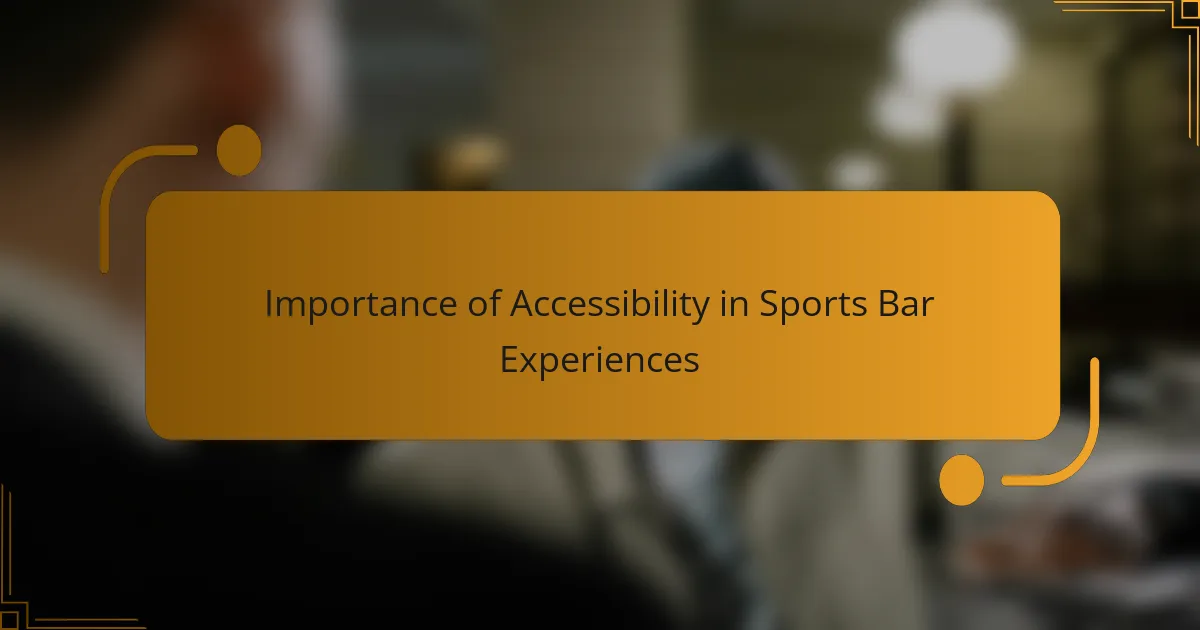
Importance of Accessibility in Sports Bar Experiences
Accessibility in sports bars shapes more than just convenience; it shapes the entire vibe of the outing. I’ve noticed that when a bar truly considers accessibility, it fosters a welcoming atmosphere where everyone feels they belong—no one is left on the sidelines. Have you ever felt that instant comfort when you walk into a space that just “gets it”?
It’s heartbreaking how often accessibility is sidelined, almost invisible until you need it. I recall one night at a busy sports bar where the overcrowded layout made navigating with a wheelchair nearly impossible. That experience opened my eyes to how lack of accessibility can turn a fun night into a frustrating challenge, making me realize it’s not just about physical access but about respecting every fan’s right to enjoy the game.
When accessibility is prioritized, the feeling of inclusion becomes infectious, enhancing the social energy of the bar. It’s powerful to see how small details—like clear pathways or easy-to-read menus—can lift the entire spirit of the place. Isn’t that the kind of environment every sports fan deserves?
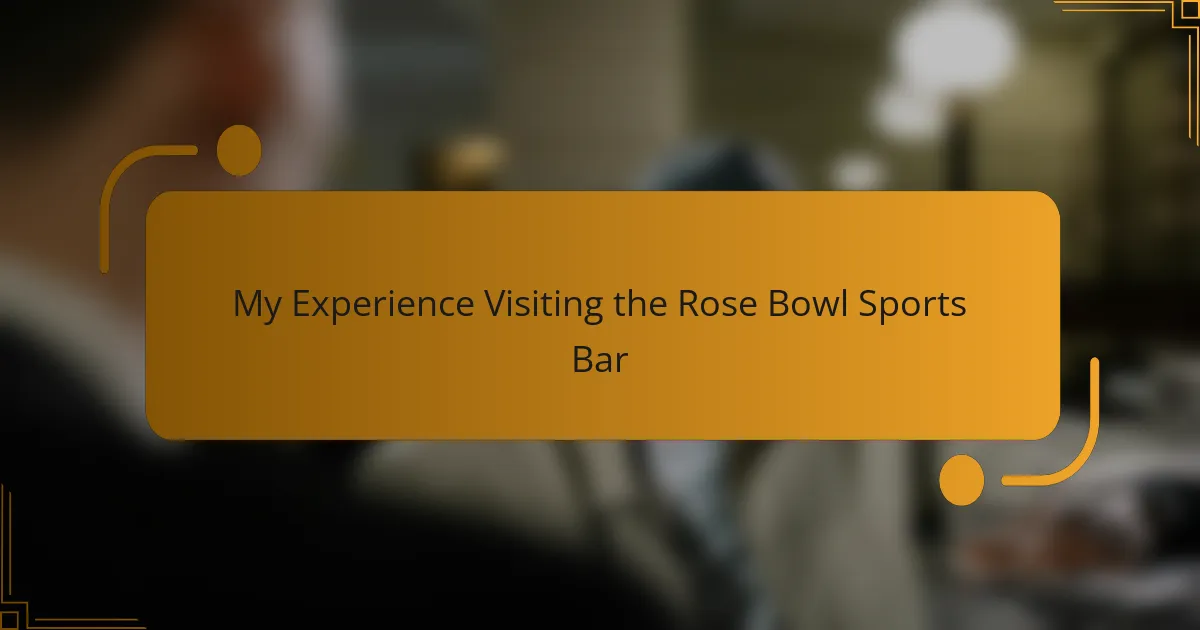
My Experience Visiting the Rose Bowl Sports Bar
Visiting the Rose Bowl Sports Bar, I immediately noticed how accessible everything felt. The entrance was wide and welcoming, which made me feel at ease right away—no awkward squeezing or asking for help just to get inside. Have you ever experienced that relief when a place seems to have thought through your needs before you even mention them?
Once I got inside, finding a comfortable spot was surprisingly easy. The seating areas were well spaced, allowing me to navigate without any hassle, and the staff were quick to offer assistance without making me feel like a burden. It’s those little moments of genuine attentiveness that made me appreciate the bar’s commitment to accessibility on a personal level.
But what really stayed with me was how the bar’s design seemed to invite everyone to join in the excitement, not just watch from the sidelines. Seeing families, friends, and fans of all abilities enjoying the game together made me think—why isn’t this the standard everywhere? It’s an experience that made me hopeful about what the future of inclusive sports bars can look like.
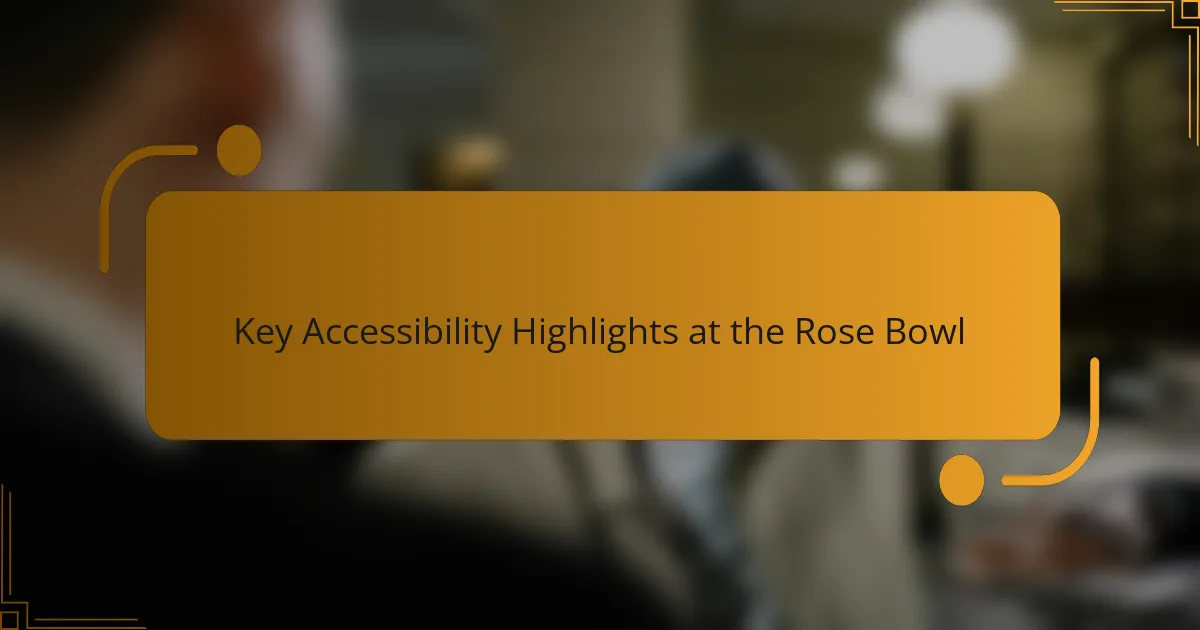
Key Accessibility Highlights at the Rose Bowl
One thing that really caught my attention at the Rose Bowl was how thoughtfully the accessible seating was integrated. The spots weren’t just functional—they were positioned for great sightlines, so I didn’t feel like I was missing out on the action. Have you ever been stuck in a place where accessible seats meant compromising the experience? That wasn’t the case here, which made a huge difference for me.
Another highlight for me was the abundance of clear, tactile signage guiding visitors to accessible restrooms and entrances. As someone who’s sometimes struggled in busy venues, this kind of clarity felt like a small but powerful way the Rose Bowl respected everyone’s independence. It made me wonder why more places don’t put this level of detail into their accessibility planning.
I also appreciated the availability of assistive listening devices, which aren’t always easy to find at sports venues. Knowing I could tune into the commentary without straining made the event far more enjoyable. Isn’t it refreshing when a venue anticipates needs beyond the obvious and actually delivers on them? That’s exactly the kind of inclusivity that turns a good outing into a memorable one.

Challenges Faced and Solutions Found
Navigating the Rose Bowl wasn’t without its challenges. At one point, I found that some pathways, while generally spacious, became tight during peak hours, making it tricky to move around comfortably. Have you ever felt caught between a crowd and narrow aisles, wondering if accessibility really accounted for real-life rushes? Thankfully, staff were attentive and quick to offer guidance, which eased the strain remarkably.
Another issue cropped up with restroom access: although they were marked clearly, the route to them involved a less-than-ideal ramp that felt steeper than expected. It made me pause and think—how many venues overlook these subtle but impactful details? The Rose Bowl addressed this by stationing helpers nearby, ready to assist if needed, turning a potential frustration into a moment of genuine care.
What impressed me most was how each obstacle prompted thoughtful solutions rather than just acceptance. For example, when I mentioned the confusing layout of one section, staff promptly explained alternative routes and assured me that future adjustments were planned. Isn’t it encouraging when a venue listens and acts on feedback like this? It revealed to me that accessibility at the Rose Bowl isn’t static—it’s a continuous effort to improve every fan’s experience.
